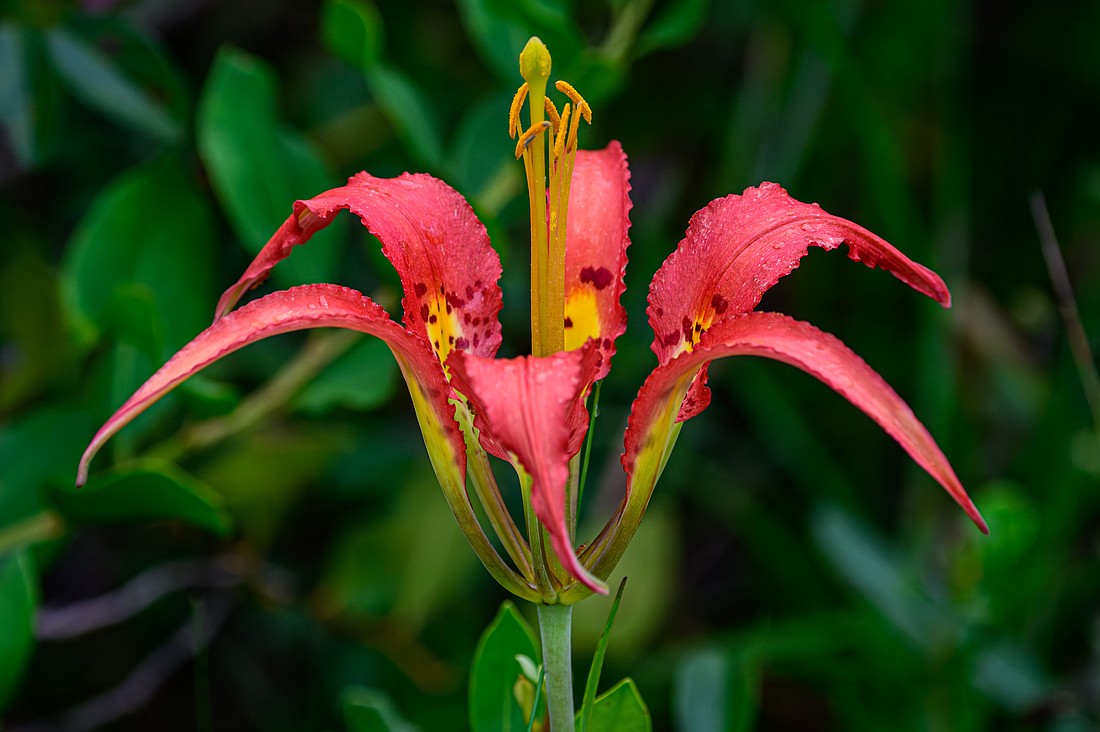- July 26, 2024
-
-
Loading

Loading

With its single orange-red bloom and spotted petals, the distinctive pine lily is an imperiled native beauty. State-listed as threatened due to habitat loss and degradation, it typically blooms at Myakka River State Park in the fall.
And though this large flower — the largest of North American lilies — attracts a variety of pollinators, given its size it's primarily pollinated by swallowtail butterflies.
When in bloom, you'll find pine lilies in the park's nearly 15,000 acres of protected Florida Dry Prairie. This natural community endemic to Florida is one of the most biodiverse and most endangered ecosystems in North America. Once a significant part of Florida’s landscape, it has been greatly reduced, due to development and conversion of prairies to pasture and agricultural use. In addition to pine lilies, Myakka's dry prairie provides critical habitat for 16 other imperiled plant species.
Pine lilies are a fire-dependent species — they require very specific conditions to bloom, such as plenty of light, space and soil nutrients, all provided by fire. They're most abundant in areas cleared of overgrowth with frequent fires, as would be typical in their native Florida habitats.
Interior west-central Florida has the most frequent lightning strikes of any region in the entire U.S. Indeed, lightning-caused fire is one of the primary natural forces that shapes Florida’s ecosystems and is critical for the health of 78% of Myakka River State Park. Prior to being impacted by European settlers, most of the lands that now make up the park naturally burned on a regular basis.
Myakka’s prairies were species-rich prior to the 46 years of fire exclusion, which began in the 1930s when the park was first formed.
Since the 1980s, prescribed fire has been used in the park to mimic natural lightning-caused fires, and has increased the abundance and health of many wildlife species.
Although they can lie dormant for many years, pine lilies won't bloom in overgrown prairies deprived of fire. This year's abundant pine lilies blooms are a welcome indicator of the success of the park's resource management efforts, and the dry prairie's health.